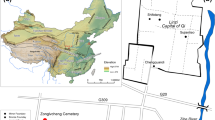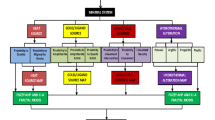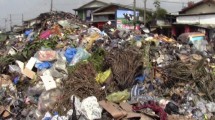Abstract
Iran has very high potential for production and export of dimension stone (rock quarried to size and shape specifications); Nevertheless, in spite of growing mine production during the past decade, in many instances this potential has been overlooked. Iran’s share in global market’s stones is small. Construction, decorative, and facing stones of Iran are among the highest-quality products in the world. In terms of variety of colors, texture, quality, and economic value, some of these reserves are unique and can be extracted and exported, creating jobs and income for the country. Lack of scientific planning, poor management and lack of clear strategies are the most important problems in these mines. Therefore it is necessary to investigate strategic factors of these mines. In this paper to analyze strategic factors in dimensional stone mines of Iran, first internal and external factors have been identified. Then the strategic planning of these mines has been developed. For this purpose, by using SWOT matrix and IE matrix (internal–external matrix) appropriate strategies have been selected.

Similar content being viewed by others
References
Ataei, M.: Exploitation of dimensional stones (In Persian). Shahrood University of technology publications, Shahrood (2008)
Iran’s Ministry of Industries and Mines statistics and informations service. http://www.mim.gov.ir/index.php?name=file_manager&req=getit&lid=428 (2009)
Kajanus M., Kangas J., Kurttila M.: The use of value focused thinking and the A’WOT hybrid method in tourism management. Tour. Manag. 25, 499–506 (2004)
Hill T.m, Westbrook R.: SWOT analysis: it’s time for a product recall. Long Range Plan. 30, 46–52 (1997)
Wheelen T.L., Hunger J.D.: Strategic Management and Business Policy. Addison-Wesley, Reading (1995)
Nikolaou I.E, Evangelinos K.I.: A SWOT analysis of environmental management practices in Greek Mining and Mineral Industry. Resour. Policy 35, 226–234 (2010)
Dyson R.G.: Strategic development and SWOT analysis at the University of Warwick. Eur. J. Oper. Res. 152, 631–640 (2004)
Jordi F., Prats C., Lopez D., Vives-Rego J.: Mathematical modelling methodologies in predictive food microbiology: a SWOT analysis. Int. J. Food Microbiol. 134, 2–8 (2009)
Markovska N., Taseska V., Pop-Jordanov J.: SWOT analyses of the national energy sector for sustainable energy development. Energy 34, 752–756 (2009)
Yuksel I., Dagdeviren M.: Using the analytic network process (ANP) in a SWOT analysis—A case study for a textile firm. Inf. Sci. 177, 3364–3382 (2007)
Wasike, C.B.; Magothe, T.M.; Kahi, A.K.; Peters, K.J.: Factors that influence the efficiency of beef and dairy cattle recording system in Kenya: A SWOT–AHP analysis. Trop. Anim. Health Prod. (2010). doi:10.1007/s11250-010-9666-3
Arslan O., Deha I.: SWOT analysis for safer carriage of bulk liquid chemicals in tankers. J. Hazard. Mater. 154, 901–913 (2008)
Pahl N., Richter A.: SWOT Analysis—Idea, Methodology And A Practical Approach. GRIN Verlag, Santa Cruz (2009)
Schutta, T. J.S.: Business performance through lean six sigma, linking the knowledge worker, the twelve pillar and Balderidge, AsQ Quality Press, Wisconsin (2006)
Janbazi R., Ahmadi M., Khoshhal A.: Recognizing of the organisation the strategic position by using internal–external (IE) analysis matrix. Int. Strateg. Manag. Conf. 4, 98–114 (2009)
Author information
Authors and Affiliations
Corresponding author
Rights and permissions
About this article
Cite this article
Tahernejad, M.M., Ataei, M. & Khalokakaei, R. A Strategic Analysis of Iran’s Dimensional Stone Mines Using SWOT Method. Arab J Sci Eng 38, 149–154 (2013). https://doi.org/10.1007/s13369-012-0422-z
Received:
Accepted:
Published:
Issue Date:
DOI: https://doi.org/10.1007/s13369-012-0422-z




